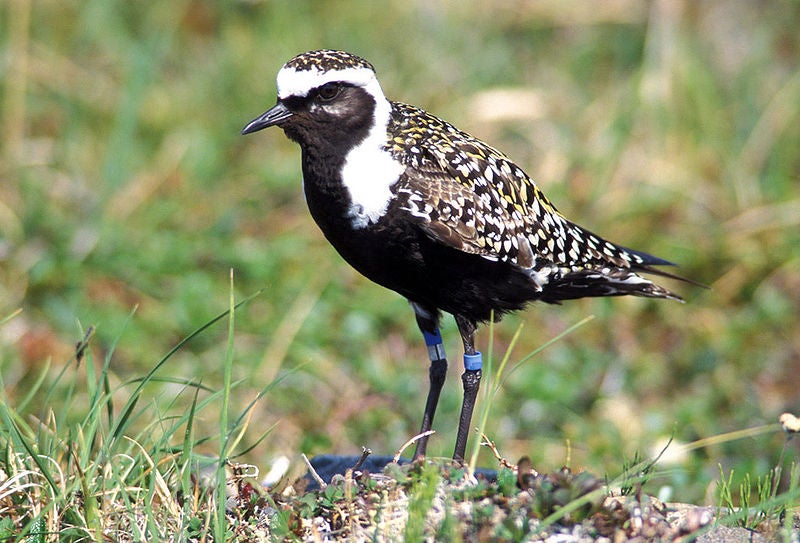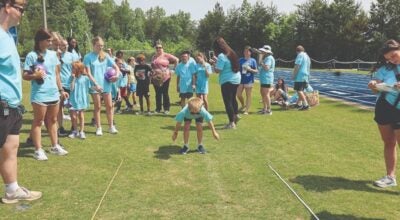Polk County’s Most Wanted – the American Golden-Plover
Published 2:22 pm Monday, August 17, 2020
|
Getting your Trinity Audio player ready...
|
In a joint effort to expand the knowledge and understanding of the flora and fauna of Polk County, Conserving Carolina and botanist/ecologist David Campbell need your help in locating this month’s “Polk County’s Most Wanted—Animal,” an attractive wading bird, the American Golden-Plover (Pluvialis dominica).
The American Golden-Plover is one of the longest-distance migrants in the Americas. It breeds in the arctic and sub-arctic regions of Canada and Alaska and winters in southern South America, primarily in the Pampas grasslands of southern Brazil, Uruguay and northern Argentina.
Starting as early as August, many species of birds are preparing for their migration south, and some are beginning their journey now. The American Golden-Plover is no different, and in the fall, it is known to travel through the entire eastern half of the United States on its many-thousand-mile journey south to its wintering grounds. Knowing this gives people in our region a rare opportunity to potentially see this bird.
During fall migration, American Golden-Plover travel in small flocks. In flight, it will display long, somewhat narrow, and pointed wings. If the bird is on the ground, it will appear as a stocky, medium-sized bird that often pauses while running to bob its body quickly up-and-down. They have a dove-like head and a short, relatively thick bill. Too, their long wings tend to extend beyond the tail when at rest and not in flight.
During the breeding season, both males and females have a white crown stripe that extends down the side of the neck. They have a black belly and face and a dark back that is mottled with gold, white, and black, and the top of the head bears a dark crown that is spangled with gold. Females tend to be paler overall and they have brown or whitish cheeks. The undertail coverts (the feathers that smooth the transition between belly and tail) are entirely black on breeding birds, but when birds are molting, these feathers can be mottled with white.
Nonbreeding and juvenile birds tend to be much drabber, grayish-brown overall and with small pale spots on the upperparts and barred underparts. Look for a pale white eyebrow stripe too.
Calls made in flight by this species are described as a 2- or 3-parted whistle: “que-del,” “tuu-u-ee,” “ko-Wee,” or “ko-WIT,” or a mellow “quee-lee-la.”
In our area, the best time of year to look for this species is in September and October, especially after a cold front; however, there have been sightings as early as August. Look for this species in drier portions of mudflats, small pools, short grass and turf farms, spray irrigation fields, and other short grass habitats (lawns). There is at least one record of this species from Polk County, spotted along the North Pacolet River at a sod farm in 1998, and this month there was an unconfirmed report of this species in the Mills River area.
The American Golden-Plover is on the 2014 State of the Birds Watch List, a list that identifies species that are most in danger of extinction without significant conservation action. In the late 19th Century, sport and market hunting were the biggest threat to this species. Hunting is no longer a threat in most of the species range, and the population is rebounding; though, habitat loss, agrochemicals, and climate change are still a threat to the survival of this long-distance migrant.
If you think that you have located an individual or flock of American Golden-Plover in Polk County, please contact Pam Torlina at Conserving Carolina by email at pam@conservingcarolina.org, and if you can provide a photo, that would be particularly helpful.
Visit Conserving Carolina’s website, conservingcarolina.org/polk-most-wanted, for more information about “Polk County’s Most Wanted” and to download and print a “Pocket Guide” with all of the “Most Wanted” plants, animals, and habitats that you can be on the lookout for!
Conserving Carolina, your local land trust, is dedicated to protecting land and water, promoting good stewardship, and creating opportunities for people to enjoy nature. Learn more and become a member at conservingcarolina.org.
Submitted by Pam Torlina.






